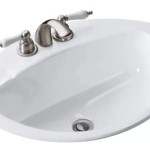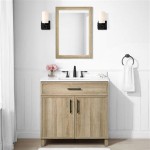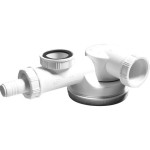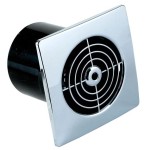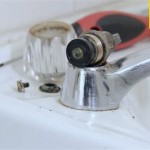What to Use Instead of Tiles in a Bathroom
The bathroom, traditionally clad in ceramic or porcelain tiles, is undergoing a design revolution. While tiles remain a popular choice due to their durability and water resistance, many homeowners and designers are actively seeking alternative materials. These alternatives offer unique aesthetic qualities, often at a lower cost or with easier installation processes. This article explores a range of materials suitable for bathroom walls, floors, and showers, offering a comprehensive guide to replacing traditional tile.
Alternatives for Walls
Bathroom walls are subjected to moisture and humidity, requiring a material that can withstand these conditions. While complete waterproofing is essential in shower areas, the wall areas surrounding sinks and toilets can tolerate a wider array of materials. The following are viable options for non-shower bathroom walls:
Paint: High-quality, moisture-resistant paint is a commonly used alternative. Specialized bathroom paints contain mildewcides, inhibiting the growth of mold and mildew. Semi-gloss and gloss finishes are preferred, as they are more water-resistant and easier to clean than matte finishes. Preparation is key; walls must be thoroughly cleaned and primed to ensure proper paint adhesion. Several coats may be necessary to provide sufficient protection against moisture. While paint is cost-effective, it lacks the textural interest of other materials and will require reapplication over time.
Wallpaper: Similar to paint selection, wallpaper for bathrooms must be carefully chosen. Vinyl wallpaper is the most suitable option due to its water resistance and durability. Installation requires a smooth, clean surface and careful application of adhesive. Wallpaper can add visual interest and personality to a bathroom, but it is more susceptible to damage from moisture and humidity than other materials. Peel-and-stick wallpaper is an even easier alternative, although its long-term durability in a humid environment can be varied. Proper ventilation is essential to prevent the wallpaper from peeling or developing mold.
Wood Paneling: Wood paneling can add warmth and character to a bathroom. However, it is crucial to select water-resistant wood species, such as cedar or redwood, or to treat the wood with a sealant. Proper ventilation is also critical to prevent moisture damage and warping. Shiplap, a type of wood paneling with overlapping boards, is a popular choice for creating a rustic or coastal aesthetic. Tongue-and-groove paneling provides a more seamless look and is equally suitable for bathroom walls.
Beadboard: Beadboard offers a classic and timeless look, and it is relatively easy to install. It consists of narrow vertical boards with a decorative groove, giving it a textured appearance. Beadboard is typically made of wood or MDF (medium-density fiberboard). MDF beadboard is more affordable than solid wood but is also more susceptible to water damage. Regardless of the material, beadboard should be primed and painted with a moisture-resistant paint to protect it from moisture.
Stone Veneer: Stone veneer provides a luxurious and natural look. It is a thin layer of natural stone that is adhered to the wall. Stone veneer is durable and water-resistant, making it a suitable option for bathrooms. It is available in a variety of colors and textures, allowing for a high degree of design flexibility. Installation requires specialized adhesives and tools, so it is best left to professionals. The added cost is usually offset by the product's high quality and long lifespan.
Alternatives for Floors
Bathroom floors experience more direct contact with water than walls, demanding materials that are not only water-resistant but also slip-resistant. Safety and durability are paramount considerations when selecting flooring alternatives.
Luxury Vinyl Plank (LVP): LVP is a synthetic flooring material that mimics the look of wood or stone. It is completely waterproof, making it an excellent choice for bathrooms. LVP is also durable, scratch-resistant, and easy to clean. It is available in a wide range of styles and colors, allowing for a variety of design options. Installation is relatively simple, often involving a click-lock system. The cost of LVP is typically lower than that of natural stone or wood. Many homeowners appreciate the aesthetic appeal, particularly when trying to recreate hardwood flooring without the same cost and maintenance.
Sheet Vinyl: Sheet vinyl is a single, continuous sheet of vinyl flooring. It is waterproof and comes in various patterns and colors. Sheet vinyl is a cost-effective option for bathroom flooring, and its seamless construction minimizes the risk of water damage. It's an older technology that is making a comeback because of its ease of installation and moisture protection. Professional installation may be required to ensure a smooth and watertight finish.
Concrete: Polished concrete floors offer a modern and industrial aesthetic. Concrete is a durable and water-resistant material, making it suitable for bathrooms. However, it must be properly sealed to prevent staining and water penetration. Polished concrete can be stained or dyed to achieve a variety of colors and patterns. It is naturally cool to the touch, which may require the use of rugs or radiant heating for added comfort. Proper sealing is vital to prevent water stains and ensure longevity.
Epoxy Flooring: Epoxy flooring creates a seamless, durable, and water-resistant surface. It is available in a wide range of colors and finishes, including metallic and glitter effects. Epoxy flooring is easy to clean and maintain, making it a practical choice for bathrooms. Installation requires specialized equipment and expertise, so it is best left to professionals. Epoxy is self-leveling, creating a smooth and even surface, and it’s highly resistant to chemicals and stains.
Cork Flooring: Cork flooring is a sustainable and eco-friendly option. It is naturally water-resistant and provides excellent cushioning underfoot. Cork flooring is also warm and quiet, making it a comfortable choice for bathrooms. However, it must be properly sealed to prevent water damage and staining. Cork is a renewable resource, and its natural texture can add a unique element to bathroom design.
Alternatives for Shower Walls and Floors
Shower areas require the most robust waterproofing due to constant exposure to water. The materials used in showers must be completely impermeable and resistant to mold and mildew growth. These materials often require more expensive installation practices, to ensure that they meet the stringent water protection needs.
Acrylic Shower Surrounds: Acrylic shower surrounds are prefabricated panels that are installed directly over the existing walls. They are waterproof, easy to clean, and resistant to mold and mildew. Acrylic surrounds are available in a variety of colors and styles, and they can be custom-fitted to any shower size. Installation is relatively simple, making them a popular choice for DIY projects. However, acrylic can be susceptible to scratches and dents, so proper care is required.
Fiberglass Shower Surrounds: Fiberglass shower surrounds are similar to acrylic surrounds, but they are generally more durable and affordable. Fiberglass is a lightweight and waterproof material that is easy to install. Like acrylic, it is available in various colors and styles. Fiberglass is more resistant to scratches and dents than acrylic, but it can be prone to fading over time. The cost-effectiveness and relatively simple installation makes it a common choice in home improvement.
Solid Surface Materials: Solid surface materials, such as Corian or Swanstone, are non-porous and waterproof. They are made from a blend of acrylic polymers and natural minerals. Solid surface materials can be fabricated into seamless shower walls, eliminating the need for grout lines. They are also resistant to stains and scratches. Solid surface materials are more expensive than acrylic or fiberglass, but they offer a higher-end look and feel. Their seamless nature reduces the risk of water penetrating behind the wall, making them a premium option.
Waterproof Panels: Waterproof wall panels offer a modern and stylish alternative to traditional tile. These panels are made from a variety of materials, including PVC, MDF, and composite materials. They are available in a wide range of colors and patterns, including realistic stone and wood looks. Waterproof panels are easy to install and require minimal maintenance. They are also completely waterproof, making them an excellent choice for shower walls. Many of these panels have tongue and groove joining systems, making them easier to install than traditional tile.
Glass Blocks: Glass blocks offer a unique and stylish way to create shower walls. They are translucent, allowing natural light to filter through while providing privacy. Glass blocks are also waterproof and easy to clean. They can be arranged in a variety of patterns and designs, adding a touch of visual interest to the bathroom. Installation requires specialized mortar and techniques, so it is best left to professionals. However, the distinct look and light-diffusing qualities render them a compelling selection for shower construction.

Tile Alternative For Bathroom Walls Multipanel
3 Alternatives To Bathroom Tiles Every Home Enthusiast Should Know In 2024 I Renovate

So Long Cold Ceramics The 3 Best Alternatives To Floor Tiles Twenty Oak

Best Shower Wall Materials Tile Alternatives For Your Bathroom Bath Fitter

Alternatives To Bathroom Wall Tiles

Benefits Of Using Shower Panels Instead Tiles Multipanel

Best Shower Wall Materials Tile Alternatives For Your Bathroom Bath Fitter

9 Fresh Alternatives To Bathroom Wall Tiles

Tile Alternative For Bathroom Walls Multipanel

9 Fresh Alternatives To Bathroom Wall Tiles
